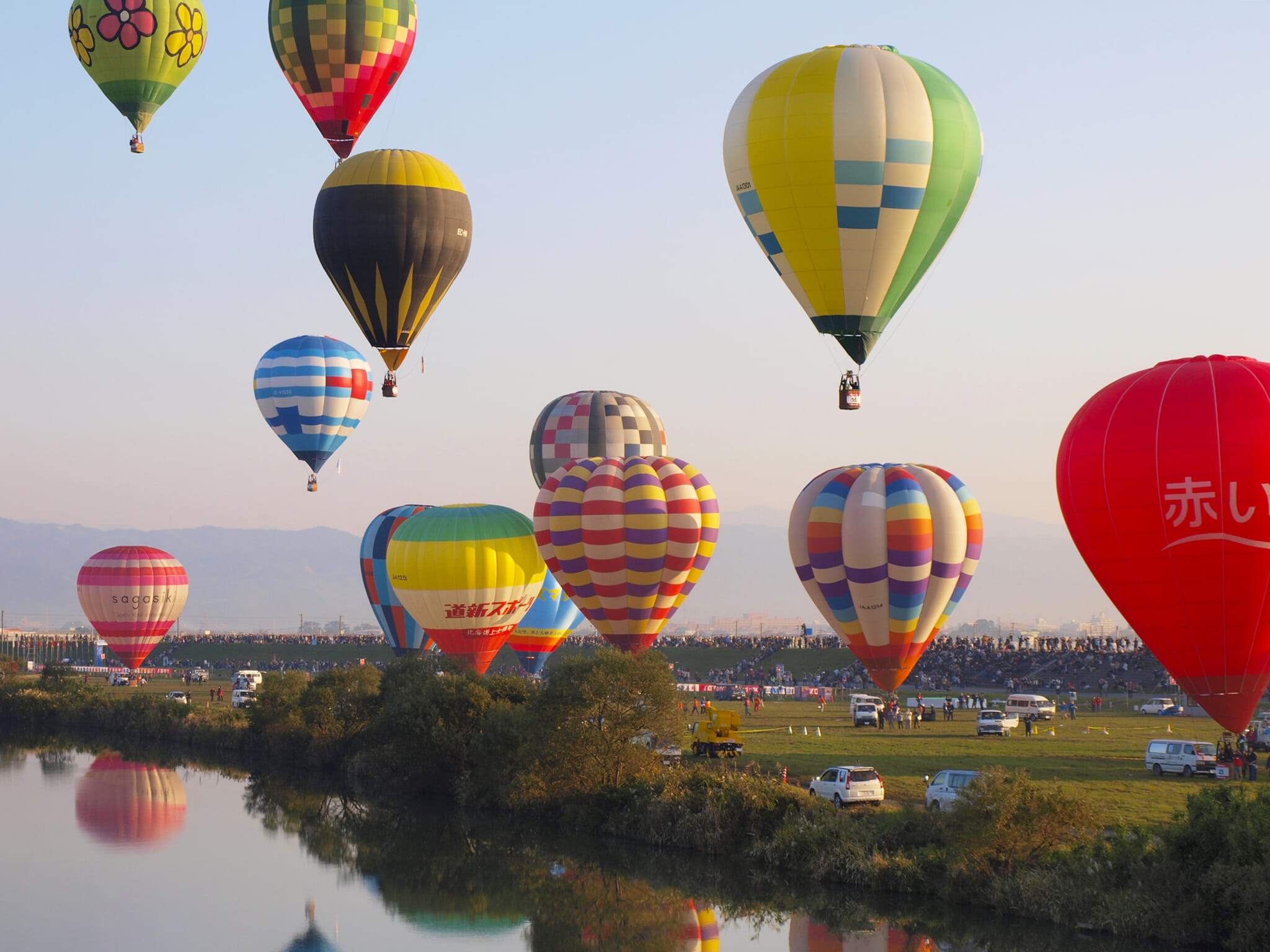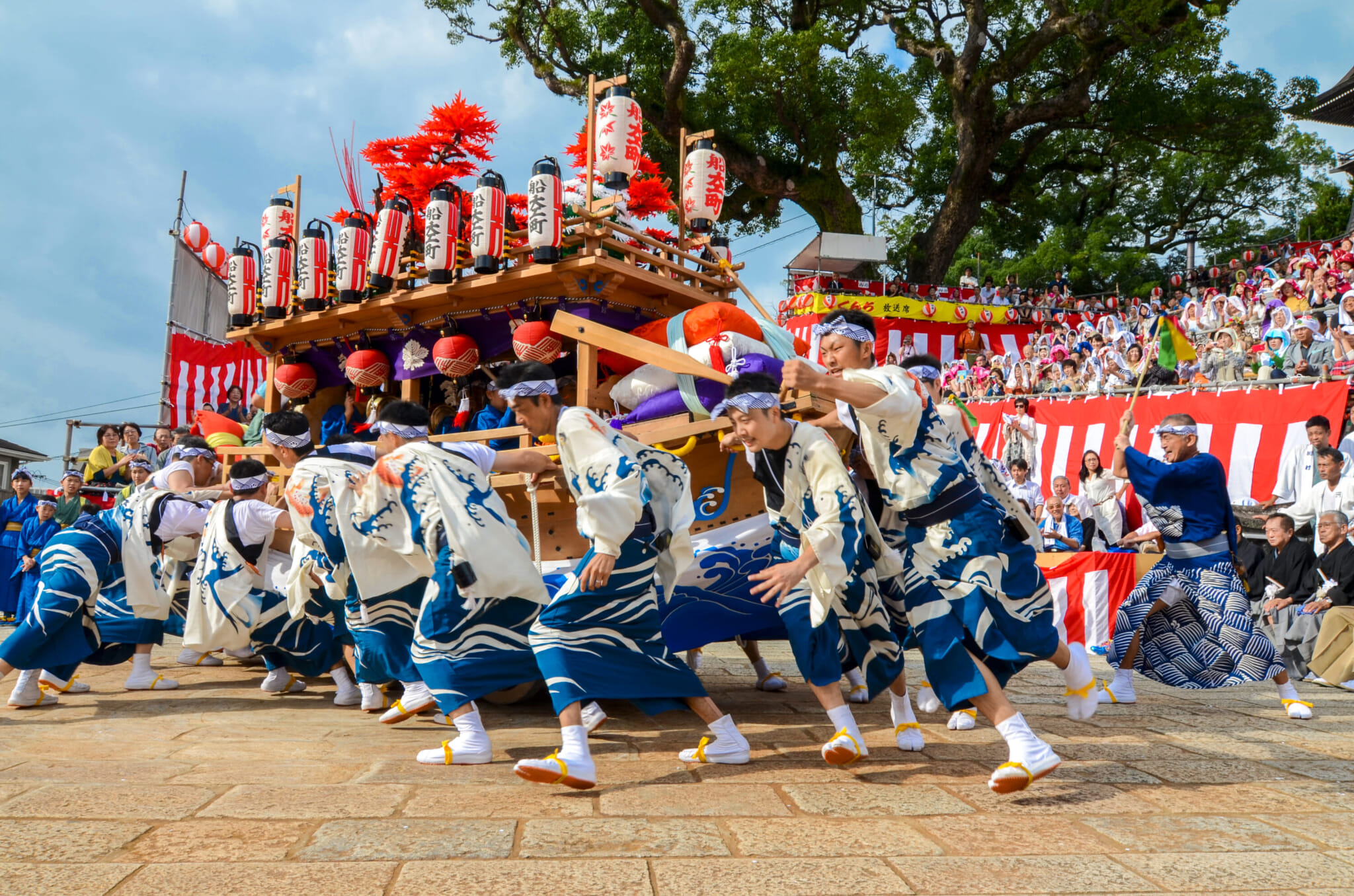
Nagasaki Kunchi
Combining cultural elements from China, Japan, Portugal and the Netherlands, the Nagasaki Kunchi festival can trace its origins back to a single dance performance at Suwa Shrine in 1634. Almost 390 years later, this raucous multicultural affair is still going strong, with 58 towns and neighborhoods taking part annually. Mesmerizing moves are still a critical element, but as the many teams take turns performing certain dances, some of them can only be witnessed every seven years. Partake in the festivities by joining the clamor of the crowds shouting “Motte koi, motte koi!” — a phrase meaning “Bring it!” — and express your appreciation for the show.
When: Oct 7–9
Where: Suwa Shrine and other venues across Nagasaki city
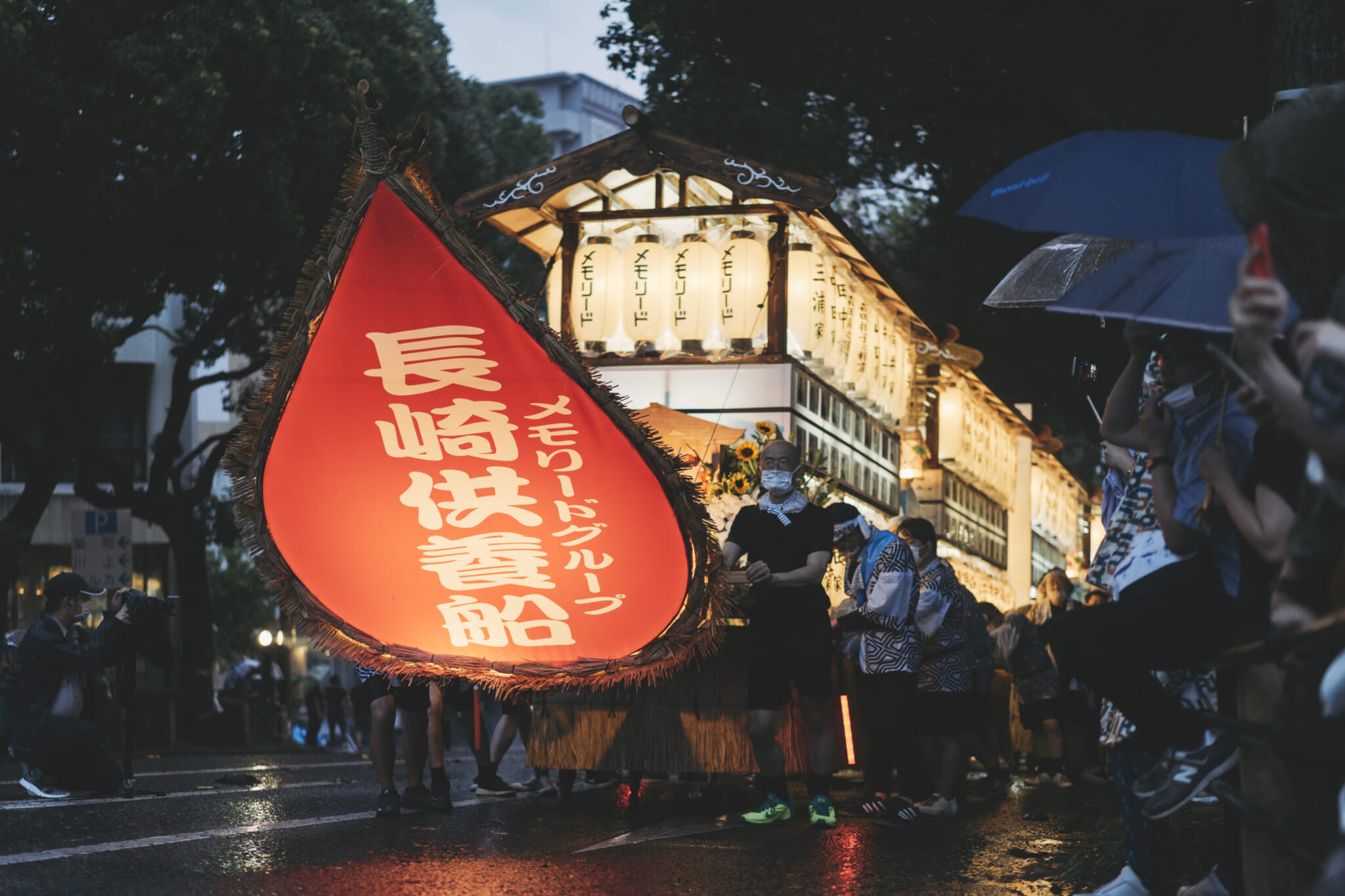
Shoro Nagashi
This traditional event is linked to Obon, the summer custom of commemorating one’s ancestors. In Nagasaki, families gather for Shoro Nagashi, a spirit boat procession that sets sail along the city’s waterways. The boats are usually prepared by families who have lost a loved one in the last year and decorated with colorful flowers, lanterns and, more recently, the deceased’s favorite things. Though Obon is typically a solemn affair, Shoro Nagashi sends its spirits out with a literal bang: As the boats wind their way through the city, they are serenaded with the explosive din of firecrackers.
When: Aug 15
Where: Around Nagasaki city
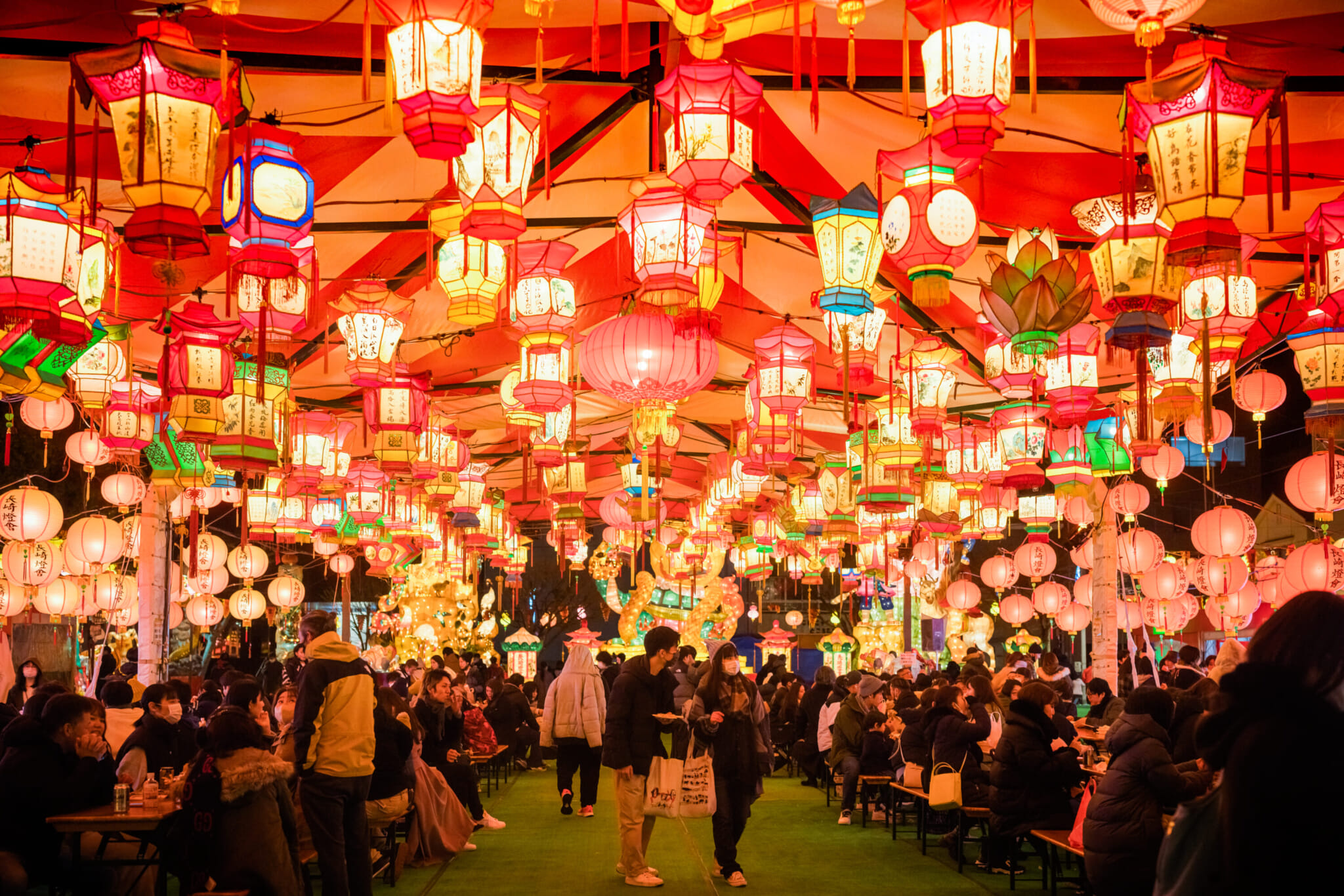
Nagasaki Lantern Festival
The Nagasaki Lantern Festival started as a celebration of the Lunar New Year but has evolved into a grand event in its own right. Nagasaki city — especially in and around Chinatown and Minato Park — is dyed with the warm glow of about 15,000 lanterns, creating a magical fairytale atmosphere. Circus performances, lion dances and other events take place under the colorful canopy of gleaming lights for a period of about two weeks.
When: Late Jan–Feb, in accordance with the Lunar New Year
Where: Minato Park and other locations across Nagasaki city
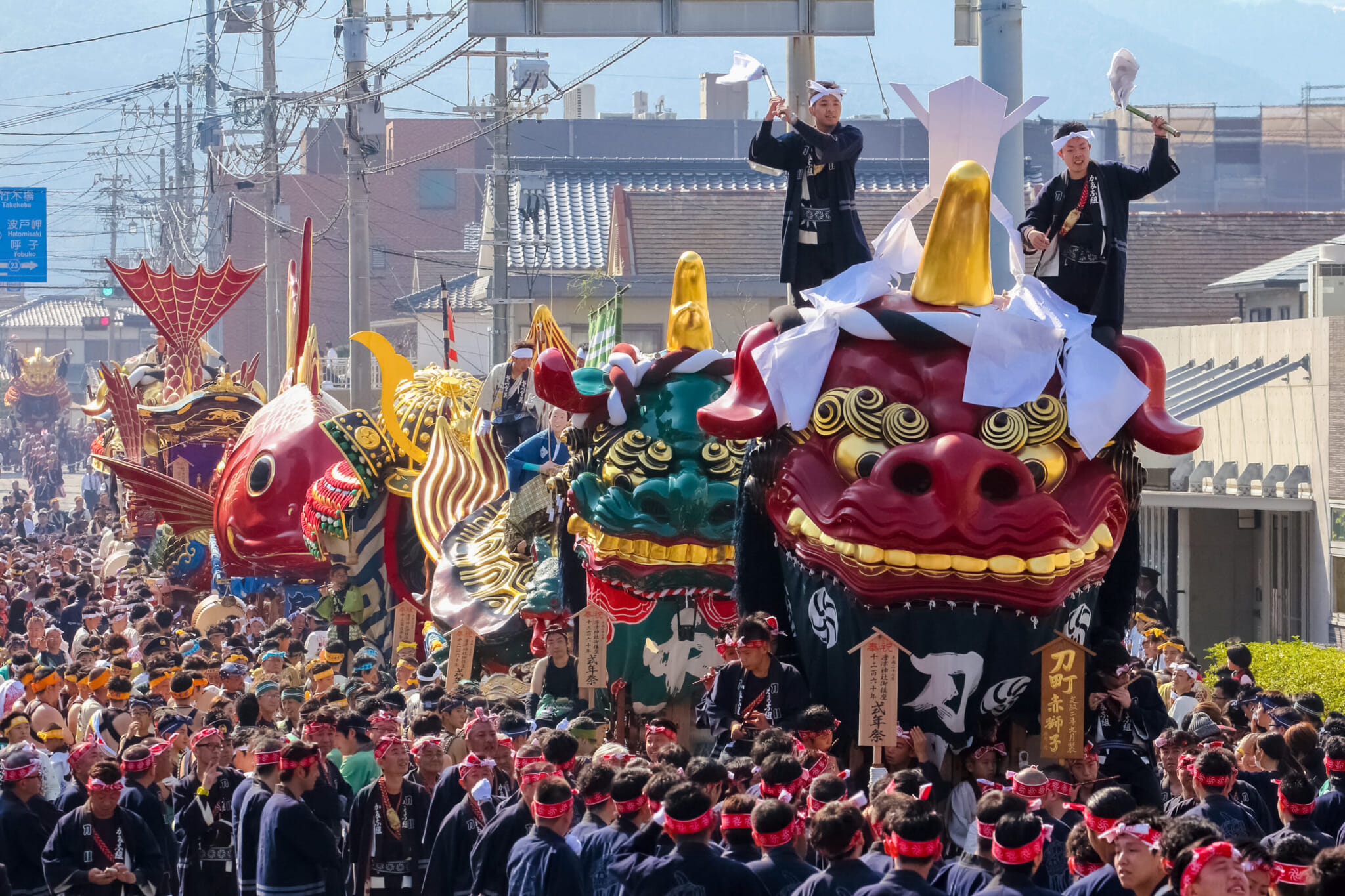
Karatsu Kunchi
This massive autumn festival in Saga Prefecture’s Karatsu city has a rare beachside twist. Fourteen hikiyama floats representing lions, fish and other creatures parade the streets to the rhythmic chants of “Enya! Enya!” and accompanying responses of “Yoisa! Yoisa!” encouraging participants to keep their strength up. Lurching to the side as they navigate sharp turns, the floats are then dragged through the sand to a temporary shrine on Nishino Beach. The parade on the festival’s final day is a more mellow event, with floats rolling through the streets to graceful flute melodies.
When: Nov 2–4
Where: Karatsu Shrine and other areas in Karatsu city
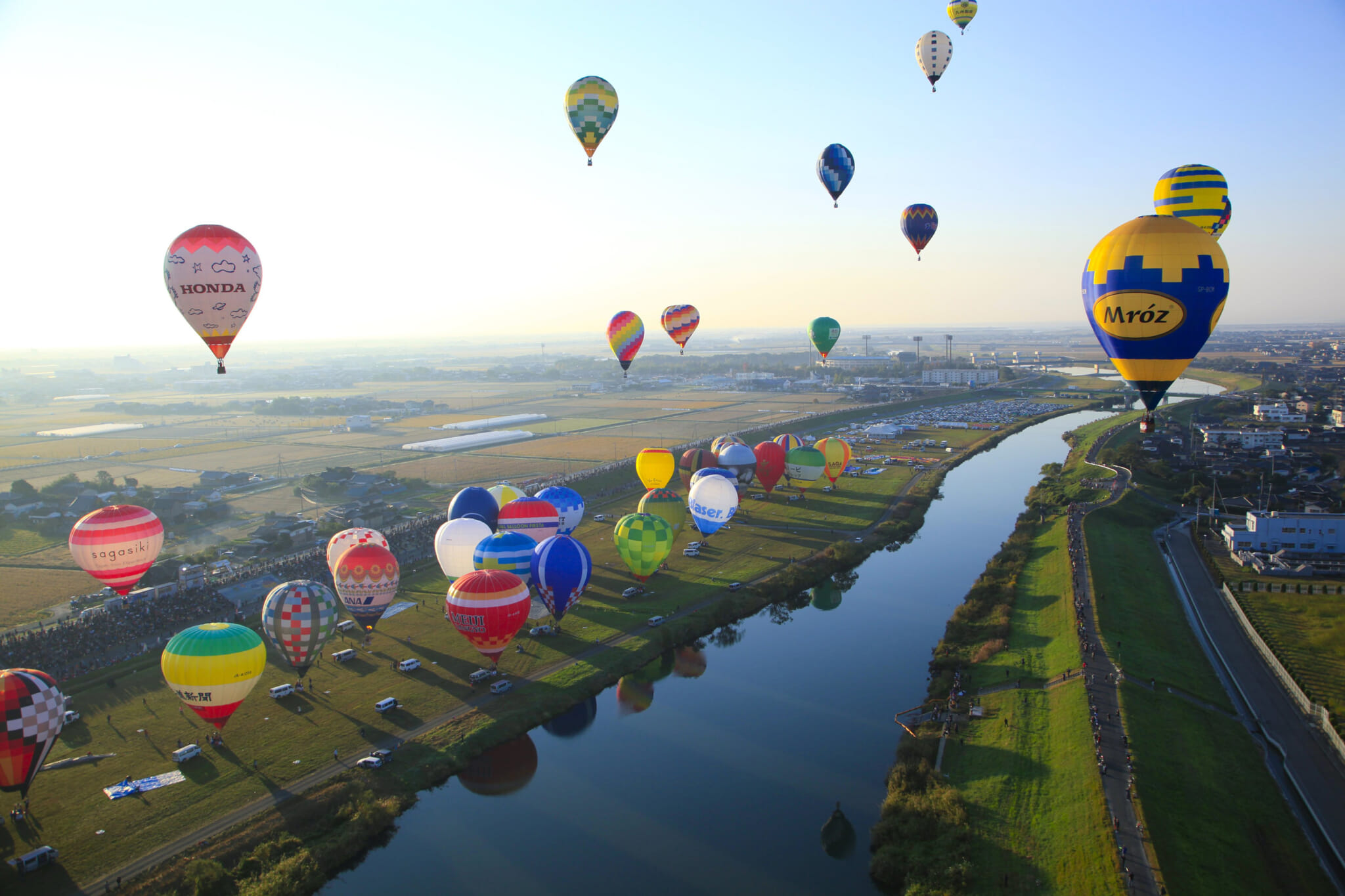
Saga International Balloon Fiesta
Asia’s largest international hot air balloon competition is ready to take flight with about 110 contestants this year. Held over the Saga Plain, an area notorious for its fast-changing wind directions and strength, the event requires competitors to constantly calculate and redirect their movements to match the weather conditions. The fantasia balloons depicting popular cartoon characters, cute animals and more offer a bright and fun non-competitive element. Don’t miss La Montgolfier Nocturne, a night mooring event on the last evening. Dozens of hot air balloons light their burners to the tempo of a musical piece, creating a melodic light show.
When: Nov 1–5
Where: Around Kase River, Saga city
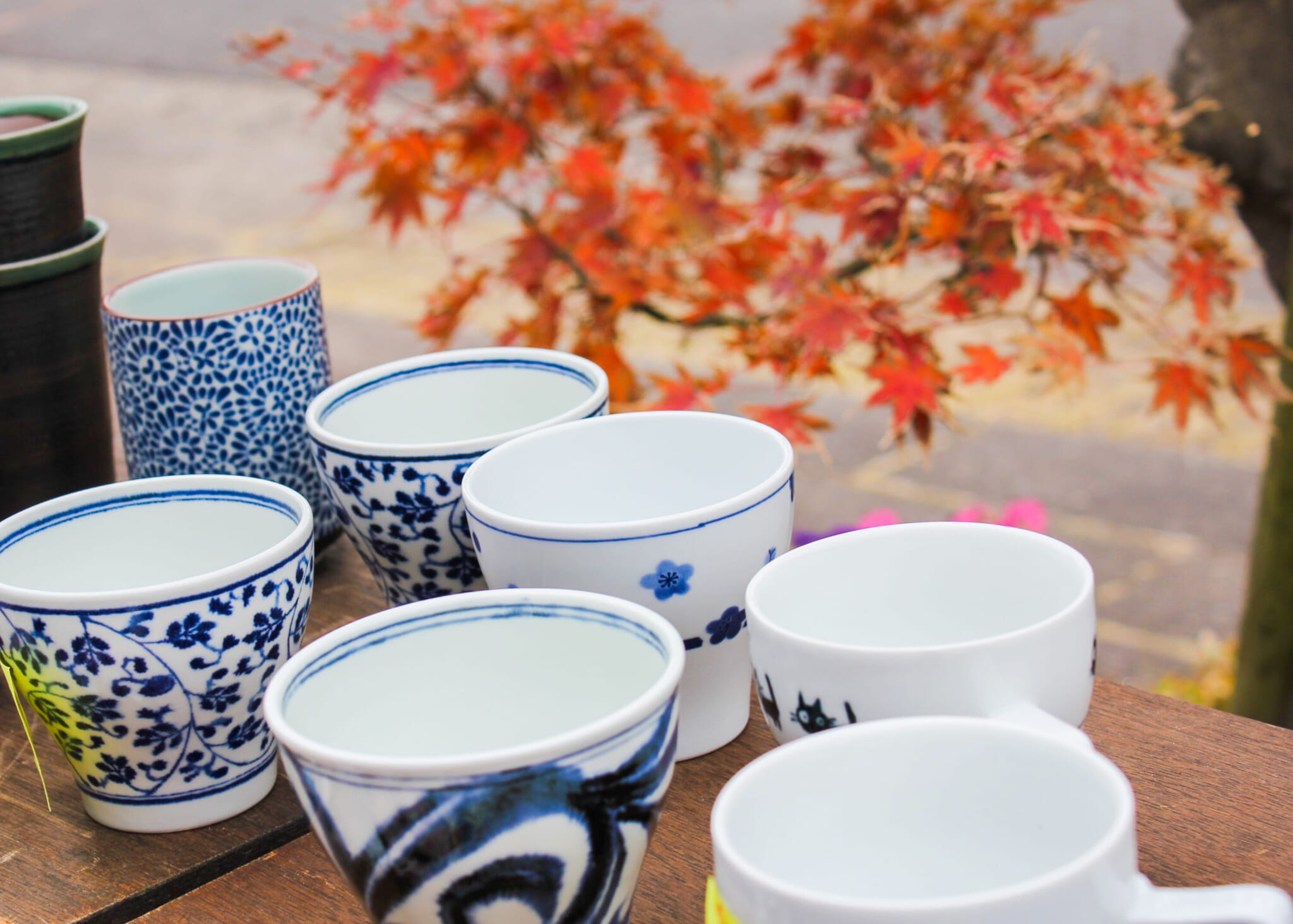
Arita Autumn Porcelain Festival
Unlike the cacophony of Arita’s spring edition, the Arita Autumn Porcelain Festival is more subdued. As you browse the stalls, be sure to tear your eyes away from the brilliant craftsmanship to catch sight of the smoke rising from the chimneys of the 400-year-old wood-fired kilns, several of which are still in use today. Make the most of the festival period by sampling the special menus — with dishes served on Aritayaki — at nearby restaurants and renting a kimono to complete the experience.
Note: Kimono rental reservations should be made at least three days in advance.
When: Mid-Nov
Where: Around Arita city

